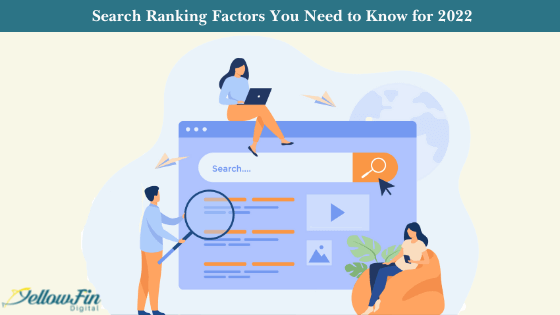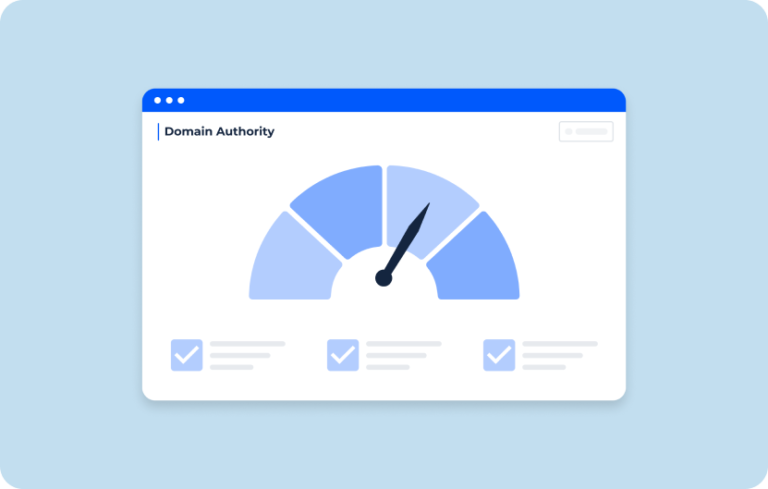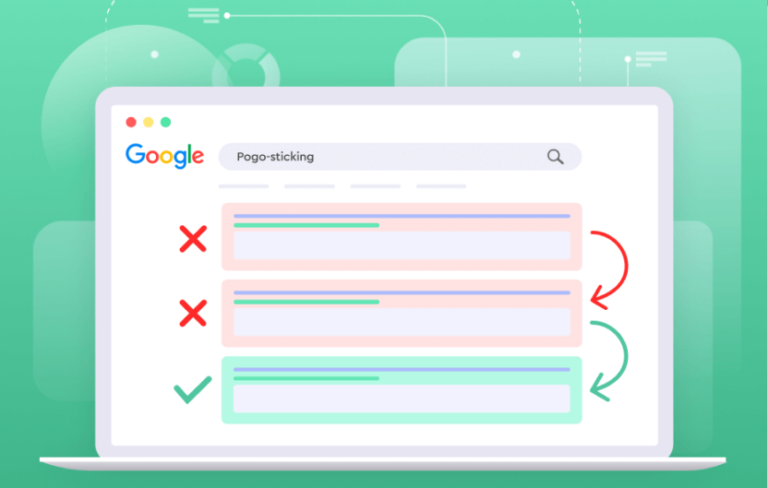Introduction:
In the dynamic world of search engine optimization (SEO), relying solely on outdated tactics like keyword stuffing and backlinking is a thing of the past. Search engines have evolved, recognizing the significance of human behavior and user experience. Achieving higher website rankings requires a holistic approach that prioritizes usability alongside traditional SEO tactics.
This shift has propelled user experience (UX) to the forefront, prompting Houston SEO service providers to adopt a more comprehensive strategy. A well-crafted UX design improves engagement and site traffic and plays a pivotal role in boosting rankings. For achieving quality SEO, websites must integrate key aspects of UX design, including fast loading speeds, mobile-friendliness, easy navigation, and engaging content.
This article explores why user experience is vital for achieving stellar SEO results on your website. By understanding the importance of UX, you can unlock the potential to elevate your website rankings and provide an exceptional digital experience for your users.
Unleash the full potential of your website with YellowFin Digital, the leading SEO services provider in Houston, renowned for creating unforgettable user experiences.
Why is UX Important for SEO?

When it comes to SEO, user experience (UX) plays a crucial role in determining the success of your website. Beyond simply satisfying users, a well-optimized UX design has the power to shape the performance metrics that search engines rely on to rank websites. Search engines gather valuable insights into how users interact with websites, and this data greatly influences their understanding of user preferences. A bad website design that fails to meet user expectations can harm ranking position.
So, let’s explore how a thoughtfully designed UX can significantly enhance your website’s SEO performance.
Reducing Bounce Rates
One of the key benefits of a good UX design is its ability to lower your website’s bounce rate. The bounce rate represents the percentage of visitors who land on your site but leave without engaging further or exploring other pages. A high bounce rate can negatively impact your SEO efforts because it signals to search engines that users didn’t find what they were looking for on your site.
However, when users have a positive and seamless experience navigating your website, they will likely stay longer and interact with your content. A well-organized and intuitive UX design helps visitors find the information they need quickly and easily. It keeps them engaged and encourages them to explore more pages, leading to a lower bounce rate. A lower bounce rate sends positive signals to search engines, indicating that your website is relevant and valuable to users.
Improves Dwell Time
Dwell time is a crucial factor in user engagement and significantly impacts SEO. It refers to the duration users spend on your website before returning to the search results page. Search engines, like Google, consider dwell time as an indicator of the relevance and usefulness of your site to searchers.
When users click on your Google listing but quickly bounce back to the search results, it sends a signal to Google that your listing may not have met their expectations. As a result, your ranking could be negatively affected.
On the flip side, when users click on your listing and actively explore your website, spending several minutes immersed in its pages, it sends a positive signal to Google. This behaviour indicates that your website offers valuable and relevant content, which can potentially improve your search result rankings.
To optimize dwell time, YellowFin Digital, a reputable SEO company in Houston, focuses on implementing user-centric design principles, intuitive navigation, and engaging content. These strategies are crucial to captivate visitors and encourage them to stay longer on your website.
Reduces POGO- Stocking Rate
Pogo-sticking occurs when a user clicks on a Google search result, fails to find the desired information, returns to the search results, and clicks on another listing. This behavior signals Google that the initial result did not meet the user’s needs.
While Google doesn’t directly consider pogo-sticking as a ranking factor, it can indirectly impact your website’s visibility. Over time, Google may adjust the ranking of the underperforming listing, causing it to appear lower in future search results for similar queries.
Enhancing Your Website’s Performance with SEO and UX Best Practices

Best practices are essential when optimizing your website for search engines and user experience. By understanding the factors that influence SEO and user engagement, you can make informed decisions to improve your site.
Here are some essential SEO and UX best practices that our SEO Service experts in Houston follow:
Embrace Mobile-Friendly Pages
Did you know that over 50% of web visitors access websites through mobile phones? This statistic highlights the importance of optimizing your site for mobile devices. If you want to stay ahead in the digital landscape, paying close attention to your mobile site’s layout, appearance, text, images, and overall user experience is crucial.
Both users and search engines evaluate websites based on their mobile layout. Every element of your mobile site has an impact on your SEO performance. Create a user-friendly navigation system with clear and consistent buttons to ensure success. Keep the design simple, prioritizing usability, engaging content, and a visually appealing interface.
User-Friendly Layouts
A website’s design, organization, and text size can significantly impact its SEO performance. Here are some effective strategies to achieve this synergy:
- Visual Appeal: Incorporate captivating images and engaging videos that align with your content to create an immersive user experience. Visual elements can capture attention, convey messages effectively, and increase user engagement.
- Clear Call-to-Action: Place strategic call-to-action buttons throughout your site to guide users toward desired actions. Clear and compelling CTAs can encourage visitors to explore further, purchase, or sign up for newsletters, boosting conversions and improving SEO.
- Header Hierarchy: Use clear and descriptive headers to structure your content. Organizing information hierarchically makes it easier for users to scan and navigate through your site. Additionally, search engines pay attention to header tags to understand the context and relevance of your content.
- Digestible Content: Format and organize your content to enhance readability and comprehension. Break up long paragraphs into shorter sections, utilize bullet points, and incorporate subheadings to make the content more scannable. Well-structured quality content improves user experience and encourages visitors to stay on your site longer.
- Relevant Internal Linking: Include internal links within your content to direct users to other relevant pages on your site. Redirecting to relevant pages helps users discover more valuable information and signals to search engines the interconnectedness of your content, leading to improved SEO.
- Dynamic Content: Consider leveraging content or image rotation scripts that randomly change the content displayed on your website with each visit. This keeps the user experience fresh and engaging, enticing visitors to stay longer and explore more of your site.
Accelerate your Site
A lightning-fast loading speed enhances user experience and significantly impacts search engine rankings. Boost your site’s loading time by compressing images, optimizing code for optimal performance, and selecting a high-speed web hosting server. Streamlining these elements will significantly reduce loading times, ensuring a seamless browsing experience and skyrocketing your Google’s SEO rankings.
Streamlining Site Navigation
Easy site navigation. A problem with focusing only on SEO and rankings is websites tend to have complex navigation and robust site architecture. Simple navigation makes a site easier to use. Simple navigation helps the user complete their task quickly and with less confusion.
Although multi-page sites are good for SEO as long as they’re easy for users to navigate, one web page with quality content and user-friendly organization can also do the trick.
Power of Headings
Headings are vital in content identification, keyword usage, and SEO enhancement. When users land on a webpage, they often scan the headings to determine if the site provides the information they seek. Similarly, search engine crawlers rely on headings to comprehend the purpose and meaning of your website’s content.
Maintaining a single H1 tag per page while utilizing H2 through H6 tags multiple times to organize the page’s content effectively is crucial. By strategically incorporating heading tags as necessary, you can optimize the structure and readability of your content, benefiting both users and search engines.
Optimise for Social Sharing
Harness the power of social media by integrating prominent social sharing buttons throughout your website. You can significantly enhance your online visibility by making it effortless for users to share your content on popular social media platforms such as Facebook, Twitter, and LinkedIn. When your content gets shared, it reaches a broader audience, potentially attracting more visitors to your website.
Moreover, increased social engagement can generate valuable backlinks from authoritative sources, further boosting your SEO efforts and improving your search engine rankings.
What Other Things Can You Do to Improve the Page’s User Experience?
In addition to the above best SEO practices, you can enhance the page’s user experience with these impactful strategies:
Seek Feedback and Test Updates

Take a proactive approach by asking your customers how they perceive your website.
- Are they quickly finding the information they need?
- Is the content appealing and compelling enough to keep them returning for more?
To conduct large-scale research, leverage email campaigns and feedback widgets like UserVoice and Get Satisfaction. For a cost-effective and targeted approach, engage in personal conversations that can quickly uncover valuable insights for improvement.
Craft Exceptional Content
Elevate the user experience by providing comprehensive and engaging material that addresses all their questions and needs. This creates a positive visitor experience and benefits your reputation with search engines like Google.
Steer clear of redundant, keyword-stuffed content that adds no value. When users are delighted with the information you offer, they are more likely to turn to Google for future queries, enhancing their experience and search engine credibility.
Reflect Your Website Visitors
Explore ways to connect with your audience through the visuals you use. Be creative in selecting images that resonate with your target demographic. If your visitors mainly comprise elderly and middle-aged individuals, incorporate visuals that reflect their age group.
However, it’s important to avoid limiting yourself to your cultural bubble. Strive to make your website inclusive and accessible to all segments of society seeking your information. When people see themselves or individuals who resemble them in the images on your site, it creates a sense of belonging and positivity.
Unlock Your Online Potential with Houston’s Premier SEO Service Provider
When designing your website, remember that your primary focus should be creating a seamless and enjoyable experience for your visitors rather than catering solely to search engine bots.
While it’s essential to optimize your website for search engines, your ultimate goal should be to provide value and convenience to your customers. A user-centric approach ensures that your site is easy to navigate, visually appealing, and delivers the information or services your visitors seek.
At YellowFin Digital, the top Houston SEO services provider, we understand the importance of striking the perfect balance between search engine optimization and user satisfaction. Our team of experts specializes in creating websites that rank well in search results and provide an exceptional user experience.
We take the time to understand your business goals, target audience, and unique requirements to develop a tailored SEO strategy that drives organic traffic and boosts conversions. With our expertise in SEO, web design, and user experience, we can help you create a website that attracts visitors and engages and converts them into loyal customers.
Contact YellowFin Digital today to enhance your online presence and unlock the full potential of your website.



